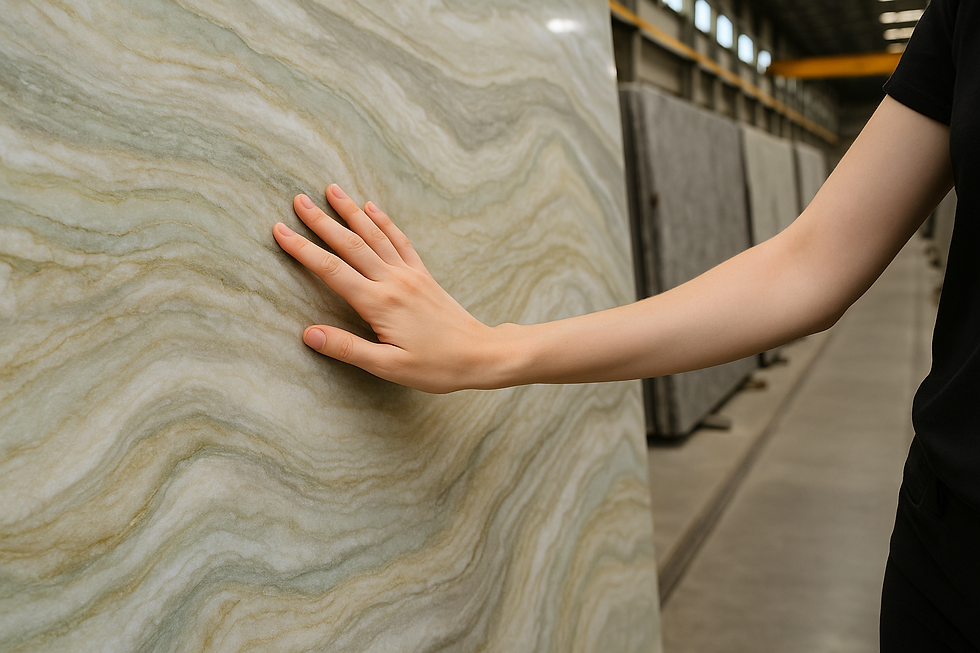Choosing Natural Stones with Architectural Intelligence: What to Consider in Each Project
- Igor Caetano
- Aug 1
- 2 min read

What You, the Architect, Need to Take Into Account
1. Technical Characteristics When Choosing Stones
Porosity: This directly affects the material’s durability. Marbles and some porous granites can easily absorb stains. This is non-negotiable — always choose low-porosity stones, especially for kitchen countertops.
Heat and Moisture Resistance: Essential when defining where each stone will be used. Granite usually performs well under heat and humidity. Marbles are less resistant. Crystalline quartzites are top-tier choices for cooktop countertops.
2. Application by Environment
Flooring: Consider foot traffic, slip resistance, and exposure to external dirt. Use samples, photos, mock-ups, or visit the supplier to ensure uniformity.
Kitchen Countertops: Avoid marble and sandy quartzites unless properly sealed. Prefer crystalline quartzites for their high resistance to acids and grease.
Bathroom Countertops & Furniture: Less wear overall, but watch out for harsh cosmetics. Engineered quartz can be a viable option, especially in humid or heated conditions.
3. Types of Stone and Finishes
Granite: Low porosity, highly durable. Available finishes: polished, honed, flamed, brushed, raw, matte, and velvet — choose according to function and visual appeal.
Quartzite: Sophisticated look similar to marble, but with superior resistance. Similar finishes (polished, brushed) and excellent for high-use areas.
Marble: Elegant and consistent appearance, but porous. Best for interior spaces with low wear, always with preventive maintenance.
Limestone & Travertine: More porous, with a classic, Venetian aesthetic. Ideal for moderate traffic areas and specific stylistic applications.
Onyx: Translucent and stunning with backlighting. Ideal for feature walls, tabletops, and accent areas — not suitable for heavy use.
Guidance for Architects – Summary of Stone Selection
Architect’s Perspective: How to Guide Clients or Your Team
Request physical samples and always use mock-ups or supplier site visits to visualize natural variations and surface finishes.
Evaluate the final use, foot traffic, climate, and expected maintenance before selecting the material.
Always include periodic sealing in the budget—especially for marbles and more porous granites.
Combine aesthetics and performance: if the project calls for shine and dramatic veining, crystalline quartzite is a strong bet. Need durability and lower maintenance? Granite is often the better fit.
In Summary: Practical Recommendations
Focus on specific usage: understand whether the client is looking for maximum durability, visual luxury, or daily practicality. Recommend materials that align with both the functional needs and the visual concept of the project.
And don’t forget the post-installation phase: educating the client on maintenance and cleaning is essential to ensure long-term satisfaction and performance.








Comments